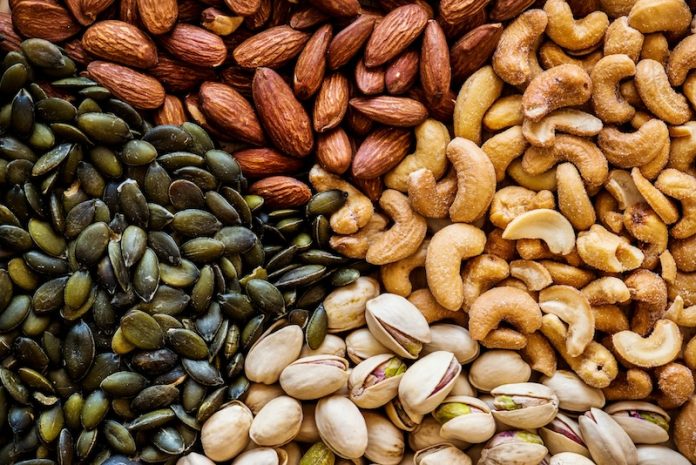
Managing blood sugar levels is essential for those with diabetes or anyone looking to maintain stable energy and overall health.
While medications and lifestyle changes are often recommended to control blood sugar, some foods can also help lower it naturally—and quickly.
Studies have shown that certain foods and nutrients can have almost immediate effects on blood sugar, either by slowing down sugar absorption, helping insulin work more effectively, or even lowering blood sugar directly.
Here’s what the research says about some foods that may help you lower blood sugar levels naturally and how they work.
Several studies highlight that high-fiber foods can play a key role in stabilizing blood sugar levels. Fiber, especially soluble fiber, slows digestion and helps prevent rapid sugar spikes after meals.
Foods like oats, legumes, and whole grains are particularly high in soluble fiber, and research shows they can reduce blood sugar spikes by slowing carbohydrate breakdown.
For example, a study published in The American Journal of Clinical Nutrition found that eating oats helped lower post-meal blood sugar levels in people with type 2 diabetes.
Similarly, beans and lentils have a low glycemic index, meaning they don’t cause sudden spikes in blood sugar. These fiber-rich foods also keep you full for longer, helping prevent overeating and potential sugar spikes from other foods.
Another food that has gained attention for its blood-sugar-lowering effects is apple cider vinegar. While apple cider vinegar is acidic and not everyone’s favorite for taste, studies have shown it can significantly reduce blood sugar levels when consumed before or with a meal.
Research from Diabetes Care found that people who took two tablespoons of apple cider vinegar before a high-carbohydrate meal had better blood sugar control afterward.
The reason for this effect is that apple cider vinegar appears to reduce carbohydrate absorption and improve insulin sensitivity, making it easier for the body to manage sugar levels. To make it more palatable, you can dilute a tablespoon or two in a glass of water and add a bit of honey if needed.
Some spices may also help reduce blood sugar levels. Cinnamon, in particular, has been widely studied for its potential blood sugar-lowering effects.
A study in the Journal of Medicinal Food found that cinnamon improves insulin sensitivity and helps glucose move into cells, where it is used for energy instead of remaining in the bloodstream.
Other research supports this, showing that taking half a teaspoon of cinnamon a day may lower fasting blood sugar levels. While cinnamon shouldn’t replace medication, adding it to your meals can be a helpful, natural support to blood sugar control.
Nuts are another beneficial option for blood sugar management. Almonds, walnuts, and peanuts contain healthy fats, protein, and fiber, which slow down sugar absorption and keep blood sugar levels more stable after meals.
A study published in Metabolism showed that people who ate almonds with meals had lower blood sugar spikes compared to those who didn’t. Nuts also help keep you full, reducing the likelihood of snacking on high-sugar foods later.
Berries, particularly blueberries, are known for their high antioxidant content and may also help control blood sugar. Blueberries contain compounds that improve insulin sensitivity, helping the body regulate blood sugar more effectively.
Research published in The Journal of Nutrition found that participants who consumed blueberry smoothies had improved insulin sensitivity within six weeks. While berries contain natural sugars, their high fiber content and antioxidants prevent sharp rises in blood sugar.
Leafy greens are a great choice for those looking to lower blood sugar levels. Foods like spinach, kale, and broccoli are packed with vitamins, minerals, and fiber, all of which contribute to stable blood sugar.
One study in Diabetes Care found that people who increased their intake of leafy greens had a lower risk of type 2 diabetes, which can be partially attributed to their fiber and magnesium content.
Magnesium is essential for insulin regulation, and many people with type 2 diabetes are deficient in it. Adding leafy greens to meals or smoothies can be a simple way to support blood sugar health.
In addition to these foods, staying hydrated is crucial. Drinking water can help flush out excess sugar through urine, and studies show that staying hydrated supports insulin sensitivity. While water itself doesn’t lower blood sugar, it helps manage levels by supporting your body’s natural processes.
These foods and ingredients aren’t magic solutions, but they can be effective additions to your diet if you’re looking to keep blood sugar levels in check.
For those with diabetes or prediabetes, it’s important to work with a healthcare provider to ensure dietary changes fit within an overall management plan.
But for many people, adding fiber-rich foods, a splash of apple cider vinegar, or a few nuts and berries can make a real difference in how they feel and manage their blood sugar.
If you care about blood sugar, please read studies about why blood sugar is high in the morning, and how to cook sweet potatoes without increasing blood sugar.
For more information about brain health, please see recent studies about 9 unhealthy habits that damage your brain, and results showing this stuff in cannabis may protect aging brain, treat Alzheimer’s.





